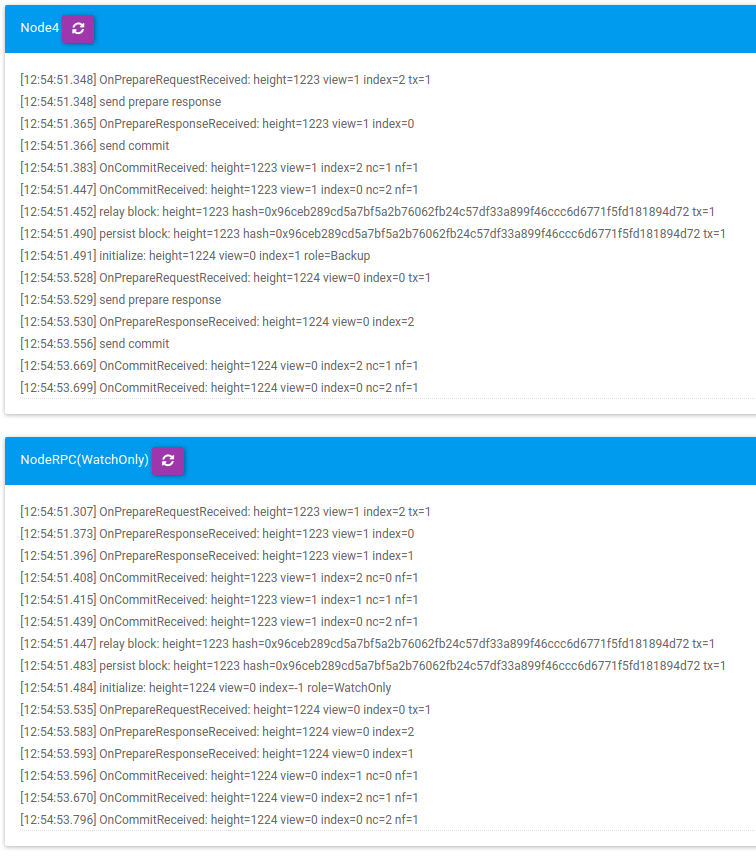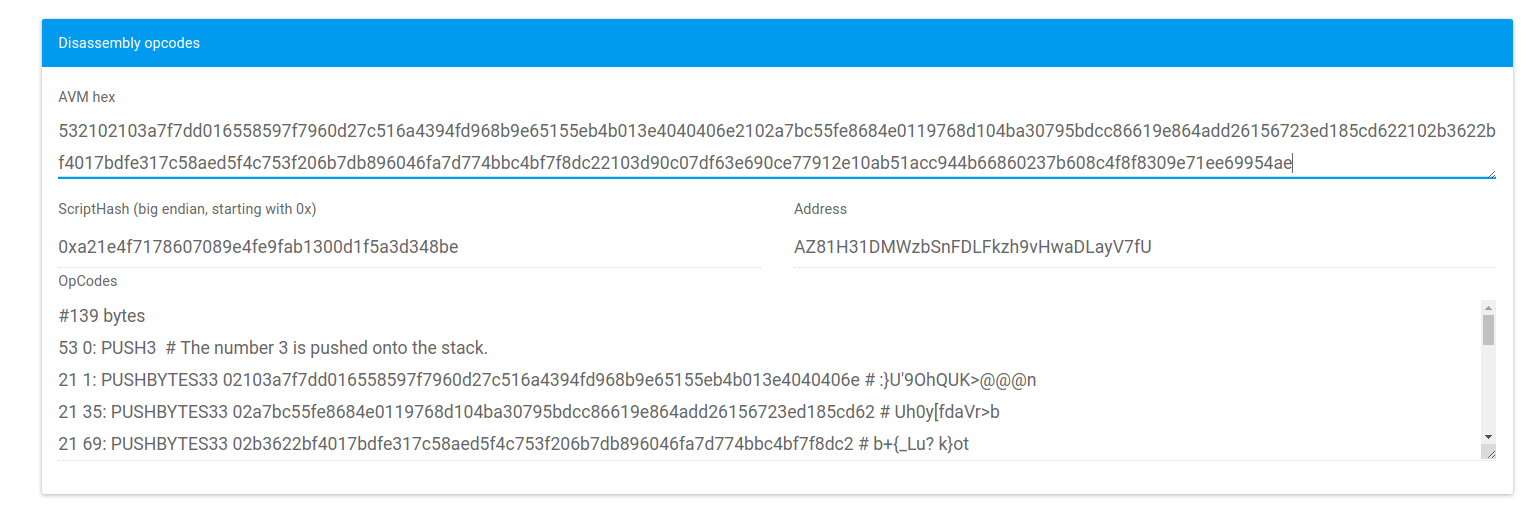Watch-only consensus nodes
As could be verified in the Network tutorial, NEO network operates in a fully distributed fashion, such as this figure above, extracted from this Medium Article:

The green boxes represents consensus, which are emerged in the pool of nodes. Messages are all broadcasted to neighbors (in an optimal scenario). Nodes with special feature can be designed for just monitoring the CN P2P messages, as can be accesed here in the NeoCompiler Eco Shared Privatenet.

In this figure, this Watch-Only node also has the feature of RPC. It is noteworthy that nodes can have special features and summarize any information desired by those that manage that client, as already emphasized in the Tutorial.
dBFT consensus scenarios
We will now outline possible consensus scenarios, using the following characters to represent nodes:

- N1: Erik Zhang, the Jedi Master;
- N2: Da Hongfei, the hearth of the Smart Economy;
- N3: Peter Lin, the truth in the hearth;
- N4: NEO Ecosystem, the sum of all projects and interests of users, exchanges, and developers;
- N5: City of Zion, the combination and partnership of individuals around the world;
- N6: NeoResearch Butterfly, the ability to explore, recover, and transform;
- N7: Master Yoda, learning from past.
By using these 7 consensus nodes and their virtues, we are going give some examples that may enlighten the mind of the readers about how dBFT may work:
The Genesis Block
Genesis block is created with 3 transactions, in which native assets NEO and GAS are created then subsequently transferred to a multi-signature account composed of the current validators.
Case 1 (normal operation)
- We are at Height
1and view0, the primary will beN1(considering a didactic formula); - Erik Zhang picks the first set of transactions, signed by the multi-sig accounts, and proposes a block
b_1_0; 2f+1nodes needs to agree with the proposal. Nodes N2, N3, N4, and N5 are the first ones to reply with their agreement on this block. Together with N1, they reach the required total of 5 (exactly 2f +1);- N1, …, N5 will probably be the ones that are first to enter into the commit phase.
- Those that are in the commit phase will automatically send their signature for the current block proposal
b_1_0; - As soon as a node sees
2f+1signatures, it can broadcast a valid block to the network. Even a watch-only node could be the first one to perform this task (which highlights how this MAS enviroment may work).
Case 2 (faulty primary)
- We are at Height
2and view0, the primary will beN2; - Da Hongfei took a brief nap and was not able to communicate with the other characters for a few seconds;
2f+1nodes agreed that they shouldchange_view. No progress on the network has occurred, and they should timeout exactly withblocktimeshifted 1 bit. In the case of a 15 second block time, it would be after 30s;- The primary will change to N3;
- N3 will propose a block only if it has participated in the
view_change, otherwise it would still be waiting forN2to propose a block; - Considering that N3 received
2f+1change_viewmessages, it would now proposes a blockb_2_1; - The standard flow outlined in Case 1 would happen from here.
Case 3 (faulty after commit)
- We are at Height
3and view0, the primary will beN3; - N3 proposes a block
b_3_0 - The majority agrees, from
N3, …,N7; - However, after entering into the commit phase,
N4dies before broadcasting its signature forb_3_0; N3,N5,N6andN7are just2Fand are still need one more signature forb_3_0. The possibilities are: 1)N4will recover from its fault; 2)N1andN2would see the messages they lost; 3)N1andN2will ask forchange_viewbut will not have the majorityMand the other nodes will reply to them with aRecoverymessage, in which they would automatically receive all known messages. As soon as any of these 3 nodes receive such messages, they will continue to contribute to the current blockb_3_0.
It should be noticed that 3 faulty nodes are f+1 which is expected to halt the progress of the network. On the other hand, it should be noticed that no real Byzantine behavior was really detected, only delays and connections problems. In this sense, it is expected that due to the partially synchronous protocol, messages will eventually arrive at these nodes.
Case 4 (Byzantine Primary)
- We are at Height
4and view0, the primary will beN4; N4is malicious and decides to send different block proposals to the network;- Each node is designed to just accept a single proposal per
view. Until the majorityM = 2f+1nodes reach an agreement on the same proposal (summarized by thehash), no nodes will be committed; - If
Mnodes commit and the otherf = 2cached a different proposal, they will receive aRecovermessage at some time, which will allow them to match the hashes. If the hashes are different we have proof of malicious activity by the primary, which would surely make NEO holders to remove him as a validator.
A 4-node consensus multi-sig
As you may already known, an address in the NEO blockchain 2.x is formed by 21, which means “Push 34 bytes on the evaluation stack”, the public key and ac, which is an opcode that invokes an script for checking witness of the address.
We suggest readers to take a look at the following article:
Let’s consider nodes with the following pubkeys (21+rootOfPubKey+ac):
- N1:
2102103a7f7dd016558597f7960d27c516a4394fd968b9e65155eb4b013e4040406eac - N2:
2102a7bc55fe8684e0119768d104ba30795bdcc86619e864add26156723ed185cd62ac - N3:
2102b3622bf4017bdfe317c58aed5f4c753f206b7db896046fa7d774bbc4bf7f8dc2ac - N4:
2103d90c07df63e690ce77912e10ab51acc944b66860237b608c4f8f8309e71ee699ac
Basically, a trivial way to create a multi-signature account can be done using the following script:
532102103a7f7dd016558597f7960d27c516a4394fd968b9e65155eb4b013e4040406e2102a7bc55fe8684e0119768d104ba30795bdcc86619e864add26156723ed185cd622102b3622bf4017bdfe317c58aed5f4c753f206b7db896046fa7d774bbc4bf7f8dc22103d90c07df63e690ce77912e10ab51acc944b66860237b608c4f8f8309e71ee69954ae
which is: 53 (number of signers) + 21 + 02...6e + 21 + 02...62 + 21 + 02...c2 + 21 + 03...99 + 54 (number of owners) + ae
We a holders pick those 4 nodes as their desired validators, the following script will be one signing every block, with the following public address: AZ81H31DMWzbSnFDLFkzh9vHwaDLayV7fU.
The latter can be achieved by converted that script to “Scripthash big-endian” and then converting to base-58.
We suggest readers to access NeoCompiler-Eco if they want to play with these conversors.


A simple single-node consensus multi-sig
Let’s take the first node (N1) previous described and create a multi-signatures acount with 1 owners and one signers by just switing 53 and 54 to 4f.
512102b3622bf4017bdfe317c58aed5f4c753f206b7db896046fa7d774bbc4bf7f8dc251ae
The latter would result in the following Address: AbU69m8WUZJSWanfr1Cy66cpEcsmMcX7BR